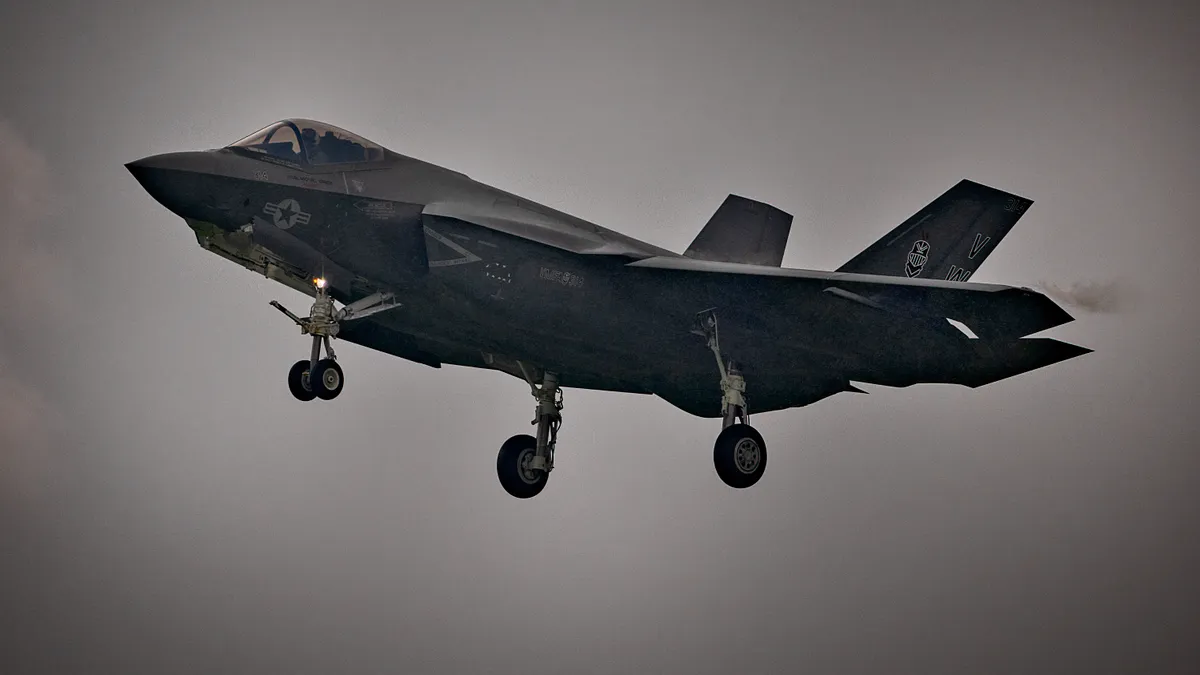Dr. Te Wu is CEO of PMO Advisory, a professional project management training and consulting firm. He is also an associate professor at Montclair State University in New Jersey and co-chair of the Project Management Institute’s development team on the portfolio management standard. Views are the author’s own.
The crash of the Marine F-35B fighter jet on Sept.17 in South Carolina places an uncomfortable spotlight on a $1.65 trillion program. Thankfully, the pilot ejected safely and there was no serious injury. The preliminary reason for the latest crash is suggested as “malfunctioning." The estimated cost of this aircraft is about $100 million.
This is the latest in a line of F-35 crashes, including the first crash of the costly aircraft in 2018, also in South Carolina, a 2019 crash in Japan, and another crash in Utah last year. There are multiple variants of this fighter jet, not only configured for our Marines, Navy and Air Force, but those configured for several allied nations jointly involved in the program.
The overall program has been plagued with delays and cost growth. According to the U.S. Government Accountability Office’s report to congressional committees in May, the original cost of the aircraft’s development in 2001 was $34.4 billion. The estimated cost has ballooned as of May to $57.5 billion. When examined over the lifespan of the F-35 Lightning II Joint Strike Fighter program, it will cost nearly $17 trillion to buy, operate and maintain the aircraft system over its lifetime of 77 years.
One of the root causes of this jet system being plagued by a decade of delays and an 80% cost overrun is its scope complexity.
The F-35 fighter jet was first conceived in the 1990s as a kind of Swiss Army Knife of fighter jets, suitable for multiple military forces. Built on a common platform, the jet can be configured for our Navy as a carrier-based fighter, for our Marines as a vertical-landing jet, and for our Air Force as a conventional fighter.
However, each of these uses require massive customizations. In an interview with then-House Armed Services Committee Chairman Adam Smith in March 2021, he called the F-35 fighter a “rathole” that drains money. But as a New York Times opinion piece suggested in 2021, the fighter jet was “too pricey to fail.”
There is an important lesson in this failed military project that all executives should pay heed to: When planning to undertake complex projects, especially those strategic projects designed to be transformative, it is vital to have a clear scope. It’s important to keep it simple by focusing on the core purposes of the project without adding nonessential features, and to apply good project management.
Trying to create the Swiss Army Knife of fighter jets that can satisfy three different military forces was an obvious mistake.The initial project over-estimated the cost and availability of interchangeable parts, which is the main rationale for the joint fighter jet.
Organizations that take on grand projects should adopt the discipline of examining every major requirement carefully and ask these basic questions: 1) Are they needed or are they wanted and even for needed requirements, are there simpler alternatives? 2) Why are these requirements needed now versus later, and how will they interact with other requirements? 3) Do the requirements contain technological, regulatory, or legal uncertainties? (This question is especially important for cutting-edge technologies) 4) Finally, does the organization have the capability to build, scale, adopt, and operate the project?
By keeping the initial requirements simple and having a clear scope of purpose, many pitfalls can be avoided in the first place.
Good project execution requires good management, and that starts with confronting the reality of the undertaking. Before committing massive time, resources and funding, organizations should employ content-matter experts and project management professionals who can critically analyze the scope of work and provide unbiased cost estimates, resources, and a realistic schedule.
In short, by applying data-driven, fact-based management, and double and triple checking the project estimates and plans to ensure a high degree of impartiality, organizations have a better chance of successfully delivering their projects on time, with the desired scope, and within their budget.
This is not to say organizations should not undertake strategic and complex initiatives. It is only a recommendation to consider these initiatives with care and involve not just the stakeholders who want the projects to happen, but also the naysayers’ concerns.
Most importantly, organizations should involve project management professionals early on to understand the cost, resources, and schedule required for such projects and set a clear and precise scope of purpose for the project to avoid falling into “ratholes” that bleed companies dry.




















